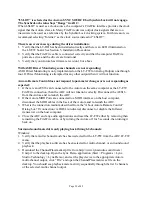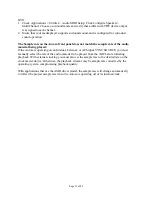
to “Remote”. In this state all three LEDs for the TO DIGITAL OUT button on the
Aurora front panel will be illuminated.
d
These buttons allow individual monitor sources to be selected for each digital output
when using Remote Routing. Clicking a button allows selection of any Analog,
Digital or LSLOT input source. Holding down the CTRL key while selecting a source
causes the remaining channels to be set sequentially (i.e. if you select LSLOT In 1 as
the monitor source for Digital Out 1 while holding down the CTRL key, LSLOT In 1-
16 will assigned to Digital Out 1-16).
f
These faders allow control over the output level of each monitor source when in
Remote Routing mode. This level attenuation occurs in the digital domain, so it is
recommended to leave these faders in their default, maximum position in situations
where the highest fidelity is required. Holding down the SHIFT key on the keyboard
while adjusting a fader, will allow adjustment of channel pairs.
g
This display reveals the amount of attenuation, in dB, of a monitor source.
h
This button enables the mute function for the associated monitor source.
j
This display indicates the status of the digital inputs. If a valid digital signal is present
the display will indicate “Locked”. If a valid digital signal is not present the display
will indicate “Unlock”.
k
This drop-down menu allows for selection of the clock source that drives the Aurora
sample clock generator from the following options:
INT
Clock derived from the on-board crystal oscillator.
EXT
Clock signal from WORD CLOCK input.
EXT/2
Clock signal from WORD CLOCK input running at half the desired
sample rate. Typically used with dual-wire AES/EBU devices.
AES A
Clock signal from the AES I/O Port A Digital Input. Clock is derived
from the first valid AES/EBU channel.
Aurora 8
Clock signal from the AES inputs 1-4.
AES B
Clock signal from the AES I/O Port B Digital Input. Clock is derived
from the first valid AES/EBU channel.
Aurora 8
Clock signal from the AES inputs 5-8.
LSLOT
Clock Signal from the computer’s FireWire adapter. Under normal
circumstances, this is NOT a recommended clock source.
l
This drop-down menu allows for selection of the sample rate for the Aurora to
operate at. If the Aurora is slaving to an external clock master, the sample rate
selected should match the rate generated by the clock source. For more information,
see Section 5.2, Clock Settings and Connections.
;
This drop-down menu allows for selection of the signal source that will be routed to
the analog outputs. “ANALOG IN”, “AES IN” and “LSLOT IN” are global
selections, affecting all analog output channels. “LSLOT” routes signals from the
computer via the FireWire connection. Choosing “REMOTE” allows individual
sources to be assigned from the Monitor Source section on the ANALOG I/O Page of
the Aurora Remote Control application.
Page 24 of 42






























